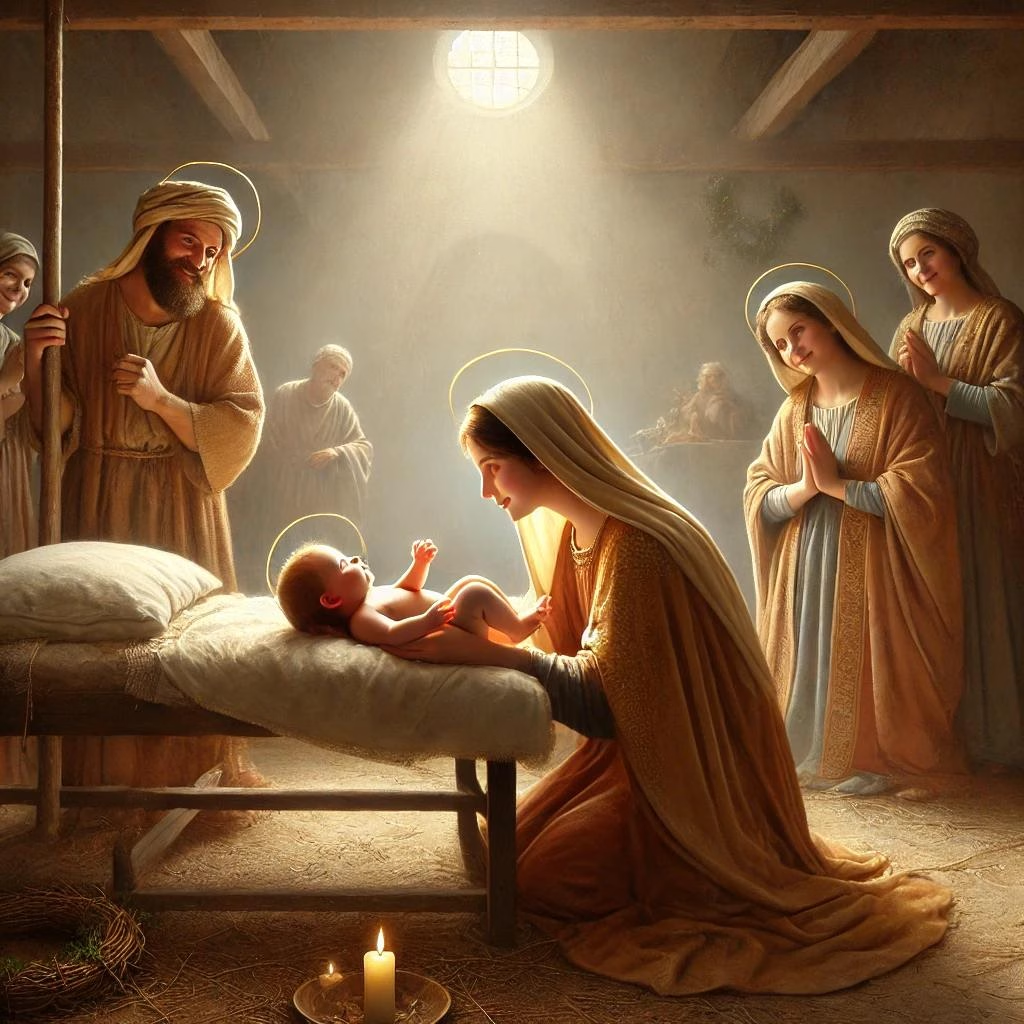The Nativity of the Blessed Virgin Mary
The Nativity of the Blessed Virgin Mary, also known as the Birth of the Virgin Mary, is a Christian feast day celebrating the birth of Mary, the mother of Jesus. This feast is observed on September 8th by both the Western Church (Roman Catholic Church) and the Eastern Orthodox Church. The celebration of Mary’s nativity is one of the oldest Marian feasts, and it holds great significance in the Christian liturgical calendar.
The tradition surrounding the Nativity of Mary is not detailed in the Bible but comes from apocryphal sources, such as the Protoevangelium of James, which dates back to the second century. According to this tradition, Mary’s parents, Saints Joachim and Anne, were a devout couple who had long been childless. After fervent prayers, they were blessed with a daughter, Mary, who was chosen by God to be the mother of Jesus. The birth of Mary is seen as a sign of hope and the beginning of the fulfillment of God’s promise to redeem humanity.
In religious art, the Nativity of the Blessed Virgin Mary is often depicted with scenes of Saint Anne holding the newborn Mary, with Saint Joachim by her side, often in a domestic setting that signifies purity and holiness. This feast day is a time of joy and reflection for Christians, as they honor Mary’s birth and her role in salvation history.
The Nativity of the Blessed Virgin Mary is not just a celebration of her birth but also an acknowledgment of her unique role in the salvation of humanity. This feast underlines the importance of Mary in Christian theology, emphasizing her as the chosen vessel through which Jesus Christ would enter the world.

Significance in Christianity
- Foundation for Marian Doctrine: The celebration of Mary’s birth underscores her special role and status within the Christian faith. It lays the foundation for the various Marian doctrines that highlight her immaculate conception, perpetual virginity, and her role as the Mother of God (Theotokos).
- Symbol of Hope and Grace: Mary’s birth is seen as a pivotal moment in salvation history, symbolizing hope and divine intervention. Her life of humility, obedience, and faith sets an example for all Christians to follow. The feast day serves as a reminder of God’s grace and the fulfillment of His promises.
- Connection to the Incarnation: The Nativity of Mary is closely tied to the Incarnation of Jesus Christ. By celebrating her birth, Christians prepare for the coming of Christ, acknowledging that Mary’s existence was necessary for the fulfillment of God’s plan. Her birth sets the stage for the redemption that would come through Jesus.
Liturgical Celebrations
- Mass and Readings: On this feast day, special masses are held, and the readings often focus on genealogies from the Bible, such as the genealogy of Jesus from the Gospel of Matthew. These readings help to place Mary within the broader context of salvation history.
- Hymns and Prayers: Special hymns and prayers dedicated to Mary are part of the liturgical celebration. These hymns often focus on her purity, obedience, and role as the mother of Jesus.
- Processions and Devotions: In many cultures, processions and other devotional practices are held to honor Mary. These may include the recitation of the Rosary, novenas, and the singing of Marian anthems.

Cultural Traditions
- Italy: In many parts of Italy, the Nativity of Mary is marked by processions and festivities, often involving local communities coming together for a communal meal. In places like Naples, celebrations include a variety of events, such as concerts and public displays of devotion.
- India: In the Indian state of Goa, this feast day is known as the “Monti Fest” and marks the beginning of the harvest season. It’s a time for thanksgiving and blessing of the new crop, often accompanied by a festive meal.
- Latin America: In countries like Mexico and Spain, the feast is observed with great enthusiasm. Churches are often decorated with flowers, and special masses and prayers are offered.
Artistic Depictions
- Iconography: In art, the Nativity of Mary is often depicted with Saint Anne (her mother) and Saint Joachim (her father) in a scene that emphasizes the holiness and sanctity of Mary’s birth. Artists like Giotto and Pietro Cavallini have created famous frescoes and paintings that capture this event. These works often portray a tender, intimate moment, highlighting the joy and divine favor associated with Mary’s birth.
- Renaissance and Baroque Art: During these periods, the theme of Mary’s nativity was frequently explored, with artists emphasizing the beauty and purity of the scene. These depictions often included angels, symbolic elements like lilies (representing purity), and the presence of divine light.
Theological Implications
The Nativity of the Blessed Virgin Mary is more than a historical commemoration; it is a theological affirmation. By celebrating her birth, the Church acknowledges Mary’s unique place in God’s salvific plan. Her birth signifies the beginning of a new era – one that leads to the birth of Jesus and, ultimately, the redemption of humanity.
Overall, the feast of the Nativity of the Blessed Virgin Mary is a time for Christians to reflect on the profound mystery of God’s love and the pivotal role that Mary plays in the story of salvation. It serves as a reminder of the virtues of humility, faith, and obedience, which Mary embodied and to which all Christians are called to aspire.




Leave a Reply